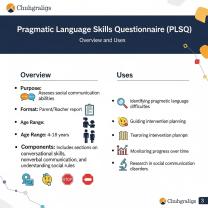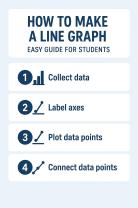What are the steps in preparing a research paper?
Writing a research paper is one of the most fundamental and important academic skills you will develop as a student. It is far more than a simple writing assignment; it’s an exercise that tests your ability to think critically, analyze complex information, synthesize various sources, and then communicate effectively and persuasively. It’s the capstone of learning for many college courses, showing your professors that you've truly grasped the material and can contribute your own insights to a field of study.
However, the word "research paper" can often feel overwhelming, conjuring images of late nights and endless footnotes. The truth is that the process involves much more than the actual writing itself. A successful paper is built on a strong foundation of deliberate work, including topic selection, focused research, outlining, drafting, and rigorous revision. Approaching the task as a single, massive project is where most students get stuck.
This complete, step-by-step research writing guide for students breaks down the entire journey into manageable stages. We'll cover everything from how to choose a research topic and gather credible materials to structuring your paper correctly and avoiding common pitfalls. By following this structured workflow, you’ll not only produce a higher-quality paper but also build confidence in your academic abilities.
What Are the Steps in Preparing a Research Paper?
A high-quality paper is the result of a deliberate, sequential workflow. Understanding the steps in preparing a research paper is the first, most crucial step in managing your time and anxiety. Think of it as an assembly line where each stage prepares the material for the next.
The full process can be outlined as follows:
Topic Selection: Choosing a relevant, interesting, and manageable subject.
Research & Reading: Gathering and analyzing credible sources.
Thesis Statement: Developing the main argument that your paper will prove.
Outline & Structure: Organizing your evidence and arguments into a logical flow.
Writing the Draft: Putting your ideas onto paper, following your outline.
Revising & Editing: Improving clarity, content, and flow.
Citation & Proofreading: Ensuring all sources are correctly cited and the paper is error-free.
The key to mastering this process is planning and time management. Never wait until the last minute. Allocate specific blocks of time for each stage. For instance, dedicate the first week to topic selection and research, the second week to outlining and drafting, and the final week to revision and citation. Following this structured workflow will ensure clarity, quality, and a less stressful experience overall.
Quick Progress Checklist
| Stage | Status (Check Off) |
| Topic Chosen & Approved | □ |
| Research Completed (Sources Gathered) | □ |
| Thesis Statement Finalized | □ |
| Outline Completed | □ |
| First Draft Written | □ |
| Revision Completed | □ |
| Citations Checked & Formatted | □ |
| Final Proofread Complete | □ |
How Do I Choose a Research Paper Topic?
Choosing a strong topic can feel like half the battle, but it’s a critical step. A weak or overly broad topic can doom your paper before you even start. Here are the core strategies for selecting a subject with the best chance of success:
1. Focus on Relevance, Originality, and Research Potential
Relevance: Does the topic align with the course material and the assignment prompt?
Originality: Can you offer a unique perspective, or are you just recycling common knowledge? Aim to contribute to the conversation, not just repeat it.
Research Potential: Is there enough material available (credible sources, data, etc.) to support a full-length paper? A topic with too little information will be impossible to write, and one with too much will be unmanageable.
2. Narrow Broad Subjects into Focused Questions
The most common mistake students make is choosing a topic that is too large. Broad subjects are impossible to cover in a typical college paper. Your goal is to narrow the subject down into a focused, researchable question.
| Broad Subject | Focused Research Question |
| Climate Change | How Urban Design Can Reduce Carbon Emissions in High-Density Cities. |
| The Civil War | The Economic Impact of Railroad Infrastructure on Union Victory in 1863. |
| Social Media | The Effect of TikTok's Algorithm on Teenage Self-Esteem and Body Image. |
A focused question guides your research and gives your paper a clear purpose: to answer that question.
3. Choose a Topic Aligned with Your Interests
If you are genuinely curious about your topic, the entire process—from research to writing—will be easier and more enjoyable. Research papers are time-consuming, so ensure you choose something you’ll be motivated to learn more about. This also ensures that you already have some background knowledge, which can help you identify strong sources.
What Is the Process of Gathering Research Materials?
Once you have a focused topic and a clear thesis, you must gather the evidence to support it. The quality of your paper is directly tied to the quality of your sources.
Finding Credible Sources
Credibility is paramount. You should rely on sources vetted by the academic community.
Academic Databases: Use your university library's online databases. Tools like JSTOR, EBSCOHost, and ProQuest house peer-reviewed academic journals, which are the gold standard for research.
Google Scholar: A free search engine that specifically indexes academic literature. It’s an excellent way to find journal articles, theses, and book chapters.
University Press Books: Books published by university presses (e.g., Oxford, Yale, Harvard) are usually scholarly and reliable.
Evaluating Source Reliability
Not all information is created equal. Use the CRAAP Test to evaluate your sources:
Currency: Is the information up-to-date?
Relevance: Does it directly relate to your specific topic?
Authority: Who is the author? Are they an expert in the field?
Accuracy: Is the information supported by evidence, and can it be verified?
Purpose: Is the source biased, or is its purpose to inform?
You also need to understand the difference between primary and secondary sources. Primary sources are original materials (e.g., historical documents, diaries, raw data from experiments, original literary works), while secondary sources analyze and interpret primary sources (e.g., a journal article discussing a historical document). Both are necessary to build a comprehensive argument.
Practical Tips for Note-Taking
To avoid plagiarism and stay organized:
Track Citations Immediately: For every source you use, immediately record the author, title, publication date, and page numbers. Use a citation management tool or simply keep a running document. This saves hours of work later.
Organized Notes: Group your notes and sources by the themes or arguments in your outline.
Quote, Paraphrase, or Summarize: When taking notes, use distinct markers: Quotation marks for direct quotes, and P or S for paraphrases or summaries. This simple technique prevents accidental improper paraphrasing later on.
How Should I Structure a Research Paper?
The research paper structure is standardized across most academic disciplines because it provides a clear, logical, and persuasive path for your reader to follow. Adhering to this structure is essential for quality how to write a research paper guidance.
The Standard Structure
Title Page: Includes the paper's title, your name, course information, and date.
Abstract: A concise (usually 150-250 word) summary of the entire paper, including the problem, methodology, key results, and conclusion. (Write this last).
Introduction (10% of the paper):
Hook: Start with a compelling fact or question to engage the reader.
Background: Introduce the topic and its importance.
Thesis Statement: The final sentence(s) that states your main argument or the answer to your research question.
Literature Review: Provides the context for your study by summarizing existing research on your topic. It shows the reader what is already known and where your paper fits in.
Methodology: If your paper uses original data (e.g., surveys, experiments), this section explains how you collected and analyzed it. For purely library-based research, this may be folded into the Literature Review.
Results and Discussion (The Body): This is the core of your argument, often broken into multiple subsections. Present your evidence (results) and then analyze and interpret that evidence (discussion) to prove your thesis. Use strong transitions between paragraphs and sections to maintain logical flow.
Conclusion (5-10% of the paper):
Restate Thesis: Rephrase your main argument.
Summarize Findings: Briefly review the most important points made in the body paragraphs.
Implications: Explain the broader meaning of your findings and suggest directions for future research.
References/Bibliography: The complete list of every source you cited in your paper, formatted according to your chosen style.
Formatting and Style
Pay close attention to the required formatting style, whether it is APA, MLA, or Chicago style. These styles dictate everything from the title page layout to the in-text citations and the final references list. Inconsistency or errors here can significantly impact your grade.
What Are Common Mistakes To Avoid in Research Paper Writing?
Even with a perfect plan, students fall into typical traps. Knowing these in advance is crucial for a successful final product.
1. Weak or Missing Thesis
A weak thesis (e.g., "This paper will discuss the history of solar power") offers no argument, while a strong one (e.g., "The economic viability of residential solar power hinges not on panel cost, but on local government incentive structures") makes a claim that must be proven. If you don't have a clear, arguable thesis, your paper will lack direction.
2. Lack of Structure and Flow
If your paragraphs jump between different topics without clear transitions, your reader will get lost. Use the structure outline as your map. Every paragraph should have a clear topic sentence that relates back to the section's argument and ultimately supports the overall thesis.
3. Insufficient Citations and Plagiarism
Insufficient citations is one of the quickest ways to lose points. You must cite every idea, statistic, fact, or quote that is not your own original thought or common knowledge. The danger of plagiarism—presenting someone else's work as your own—is severe. Improper paraphrasing (changing only a few words while keeping the original sentence structure) is a form of plagiarism. Always rephrase ideas completely in your own voice and cite the source.
4. Over-reliance on Online Summaries
Do not substitute a full reading of a primary source or major research article with a quick online summary. You risk misrepresenting the author’s argument and your analysis will be shallow. Engage directly with the core materials.
Final Tips: Don't Rush the Revision
Many students view revising and editing as the same thing—they are not.
Revision is about improving the content and structure. Are your arguments clear? Is the evidence strong? Is there a logical flow between sections?
Editing and proofreading are about fixing surface errors: grammar, spelling, punctuation, and checking your citations for accuracy.
You must allow yourself at least two full days between finishing your draft and starting your revision. Fresh eyes catch mistakes. Seek feedback from a professor or a writing center tutor. This final stage of polishing is where a good paper becomes a great one.
Conclusion
Successfully completing a research paper relies on careful planning, solid research, and clear communication. If you view the project not as a single daunting task, but as a series of manageable steps—from carefully choosing a research topic to meticulously checking your citations—you will drastically improve your outcome.
Embrace the process. View this task as a skill-building journey that prepares you for high-level academic and professional work, rather than a one-time assignment. You are learning how to ask a question, find an answer, and persuade others with evidence. A great research paper doesn’t just share information—it contributes knowledge to the world.
FAQ Section
How long should a research paper be?
The length is almost always dictated by the assignment instructions (e.g., 10-15 pages, 3,000 words). If no length is given, a general undergraduate paper is typically 8-10 pages. Follow your professor's guidelines first and foremost.
What makes a topic suitable for research?
A topic is suitable if it is narrow enough to be fully addressed within the page limit, has sufficiently available credible sources, and allows you to make an original, debatable argument (a strong thesis) rather than just describing facts.
How many sources should I include?
While there is no fixed rule, most university-level papers require a minimum of 8-12 high-quality, scholarly sources (academic journals, books, reputable government reports). The longer and more complex the paper, the more sources you should include to fully support your claims.
What’s the difference between revising and editing a paper?
Revising means re-seeing the paper's big picture—checking the strength of your argument, the organization of your sections, and the clarity of your evidence. Editing is focused on the small picture—fixing errors in grammar, spelling, and citation formatting. Always revise first, then edit.














APA_Adept
on October 12, 2025The logical structure (Intro, Lit Review, Methodology, Conclusion) is well-explained. It’s the framework every student needs for success. #ResearchPaperStructure